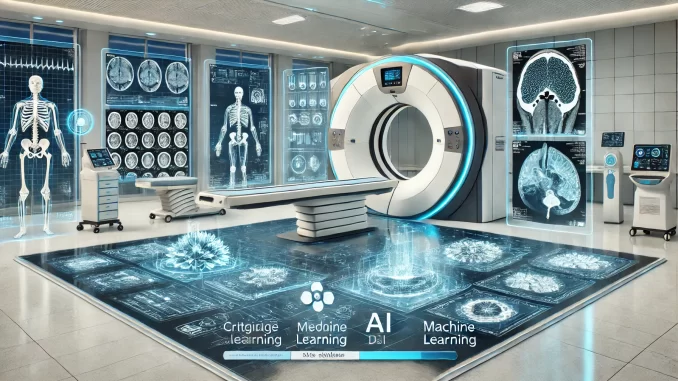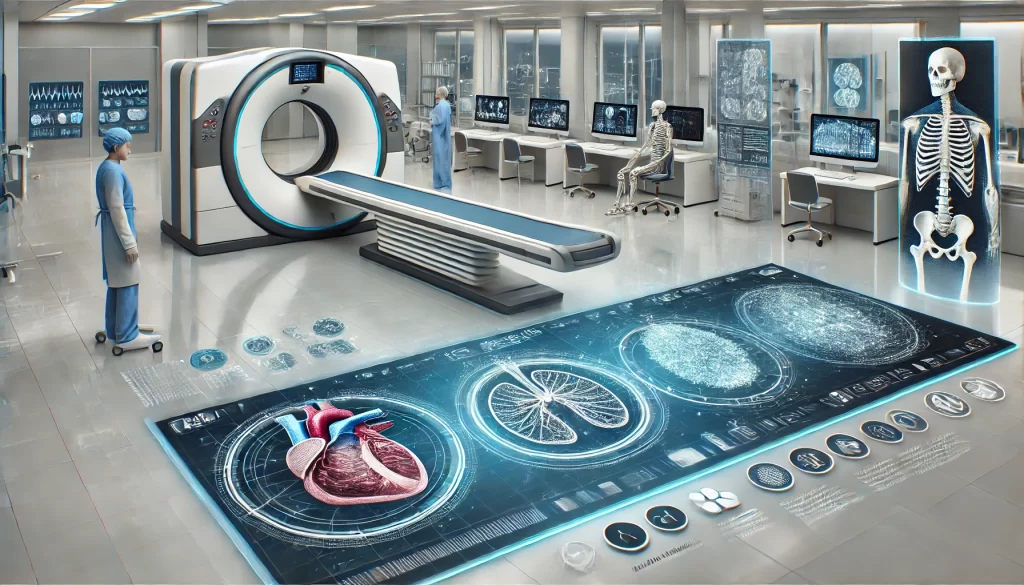
Introduction to VISTA-3D NIM Microservice
NVIDIA has introduced a groundbreaking tool in medical imaging technology, the VISTA-3D NIM microservice, which aims to revolutionize CT scan analysis with its advanced capabilities in organ and disease segmentation. This innovation is set to streamline the workflow of radiologists, offering precise, efficient, and scalable solutions for imaging diagnostics.
The VISTA-3D Model: A Deep Dive
The VISTA-3D (Versatile Imaging Segmentation and Annotation) model stands out for its training on a vast dataset of over 12,000 CT scan volumes, encompassing 127 different types of human anatomical structures and a variety of lesions, such as lung nodules, liver tumors, and bone abnormalities. This extensive training enables the model to deliver highly accurate out-of-the-box segmentation and supports zero-shot interactive segmentation, making it exceptionally versatile and useful in diverse medical scenarios.
Core Workflows and Functionalities
- Segment Everything: This comprehensive workflow allows for a thorough examination of the entire body, facilitating a deeper understanding of complex conditions that may affect multiple organs. It is particularly useful in cases where a holistic view of the patient’s health is required.
- Segment Using Class: This function provides focused views based on specific anatomical or pathological classes, which is crucial for targeted analysis and diagnosis of specific diseases. It aids in pinpointing particular areas of interest, thereby enhancing diagnostic accuracy.
- Segment Point Prompts: This innovative feature allows users to enhance segmentation accuracy through interactive, user-directed inputs. This capability significantly accelerates the process of creating precise ground-truth data, which is essential for both diagnostics and further research.
Advanced Architectural Design
The architecture of the VISTA-3D model includes a sophisticated encoder layer followed by two parallel decoder layers—one dedicated to automatic segmentation and the other to point prompts. This dual-layered architecture ensures that the model can adapt to various anatomical regions with high accuracy, making it an invaluable tool in the medical imaging field.

Leveraging the VISTA-3D NIM Microservice
Access and Usage
The VISTA-3D NIM microservice, hosted on the NVIDIA API Catalog, provides an accessible platform for medical professionals to explore its features using sample data. This service can segment over 100 organs or specific anatomical classes, offering versatile views in axial, coronal, or sagittal planes, which are critical for comprehensive diagnostic assessments.
Getting Started with the Service
Users interested in utilizing VISTA-3D for their clinical or research needs can obtain a personal key from NVIDIA, which includes 1,000 free credits for trial use. The process involves generating an API key and using the provided sample code in various programming languages, facilitating ease of integration and use.
Running VISTA-3D Locally
For those who prefer to operate the NIM microservices on local hardware, NVIDIA provides an option to apply for access. Successful applicants receive a Docker container that allows them to run the VISTA-3D NIM microservice on their systems. This setup requires Docker, Docker Compose, and NVIDIA drivers, along with a provided Docker Compose file and instructions for setting up an NGINX server to manage large medical images, which are typically cumbersome to transmit via standard API payloads.

Conclusion: A Leap Forward in Medical Imaging
NVIDIA’s VISTA-3D foundation model, paired with the NIM microservice, marks a significant advancement in medical imaging technology. This innovation not only enhances the precision of organ and disease segmentation but also streamlines the workflow for radiologists and medical professionals. By simplifying the deployment and usage of advanced imaging models, NVIDIA is facilitating a new era of diagnostic accuracy and efficiency.
As the medical community continues to adopt and integrate these technologies, the potential for improved patient outcomes and more efficient healthcare delivery becomes increasingly tangible. The VISTA-3D NIM microservice represents a critical step toward more sophisticated and accessible medical imaging solutions, poised to transform the landscape of digital health and diagnostics.
Bitcoin’s Dynamic Surges to 16-Month High Amid Positive Market Sentiment
Explore more about [Bitcoin’s price movements and market trends]




Be the first to comment